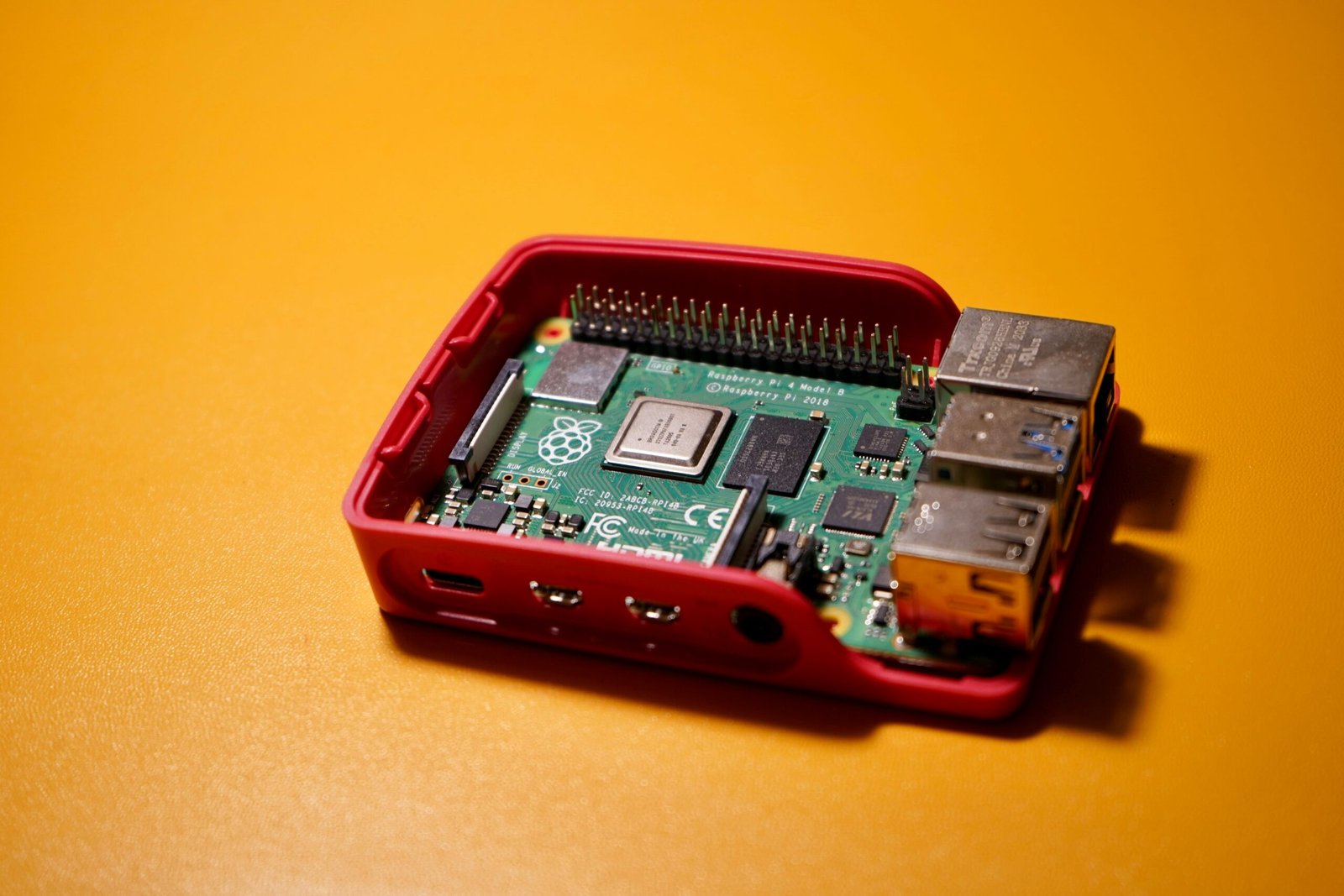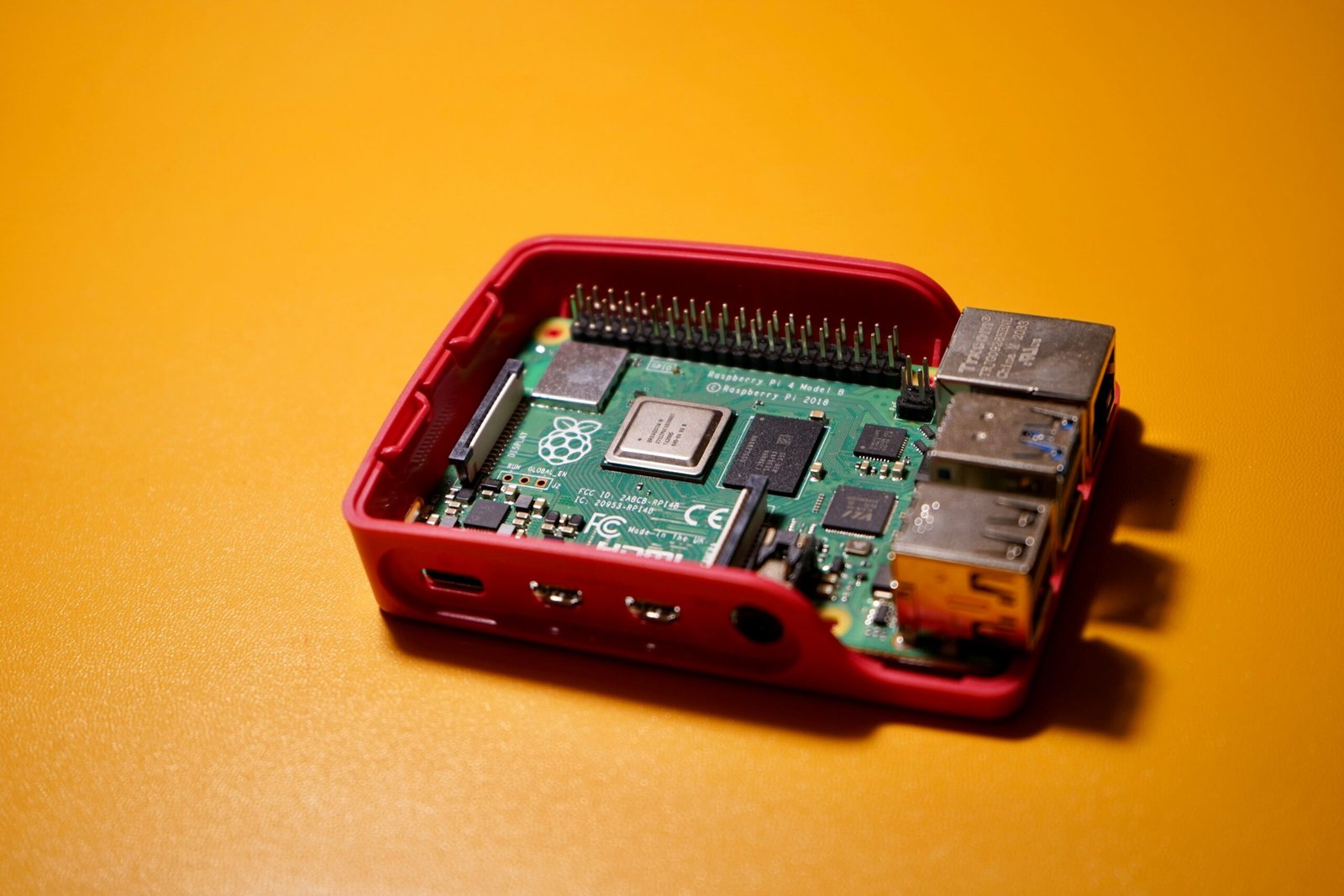Understanding the Difference Between Microcomputers and Minicomputers
Introduction to Microcomputers and Minicomputers
Microcomputers and minicomputers have played significant roles in the development of computing technology. Understanding their distinctions requires an exploration of their basic definitions, historical contexts, and technological evolutions. Microcomputers, often referred to as personal computers, are small-scale computers that became widely accessible for individual use during the late 20th century. These computers are built around microprocessors, which integrate the functions of the computer’s central processing unit (CPU) onto a single or few integrated circuits. Examples of microcomputers include desktop PCs, laptops, and workstations.
Minicomputers, on the other hand, emerged earlier, in the mid-1960s, as a more compact and affordable alternative to mainframe computers. Contrary to what their name might suggest, minicomputers are larger and more powerful than microcomputers. They were primarily used by small to medium-sized businesses for tasks that required more processing power than a microcomputer could provide but did not necessitate the vast capabilities of a mainframe. Notable examples include the Digital Equipment Corporation’s (DEC) PDP and VAX series.
The technological evolution of these two types of computers was driven by advancing semiconductor technology, particularly the development of integrated circuits. Microcomputers capitalized on the rapid improvements in microprocessor design and manufacturing, leading to continuous enhancements in performance, affordability, and accessibility. Minicomputers, while also benefiting from advancements in semiconductor technology, maintained a focus on intermediate-scale processing tasks, carving out a niche between personal and mainframe computing.
This foundational understanding of microcomputers and minicomputers sets the stage for a deeper exploration into their specific differences in architecture, applications, and performance. As we delve further into their characteristics, it becomes evident how each type of computer uniquely addressed the needs of its time and paved the way for modern computing solutions.
Technical Specifications
Microcomputers and minicomputers, while both integral to the evolution of modern computing, diverge significantly in their technical specifications. Central Processing Unit (CPU) architecture is one of the primary differentiators. Microcomputers typically utilize single-chip microprocessors that integrate all the necessary functions for controlling a computer. These processors tend to have fewer cores and lower clock speeds compared to their counterparts in minicomputers. On the other hand, minicomputers boast more robust CPUs with multiple cores and higher clock speeds, resulting in superior multitasking capabilities and overall processing power.
When it comes to memory capacity, microcomputers are designed with smaller memory footprints, often ranging from 4GB to 16GB of RAM in general-purpose systems. This suffices for everyday tasks but may struggle with more demanding applications. Minicomputers, in contrast, are equipped with significantly larger memory capacities, often exceeding 32GB of RAM, which allows them to handle more complex and resource-intensive processes simultaneously.
Storage options also vary considerably between these two classes of computers. Microcomputers commonly employ solid-state drives (SSDs) or hard disk drives (HDDs) with capacities suited for individual users, typically between 256GB and 2TB. Minicomputers, designed for more extensive data storage and quicker access times, are usually outfitted with multiple and often higher-capacity storage solutions, implementing advanced configurations such as RAID arrays to enhance performance and reliability.
The input/output (I/O) capabilities further distinguish microcomputers from minicomputers. Microcomputers are equipped with a variety of I/O ports suited for general consumer needs, including USB, HDMI, and Ethernet ports. Minicomputers, tailored for business and industrial applications, feature more specialized I/O interfaces, offering greater connectivity options such as multiple network ports, serial and parallel ports, and advanced peripheral interfaces to support a wider range of peripheral devices and network connections.
In comparing the processing power and hardware components, it is evident that while microcomputers are optimized for personal and smaller-scale tasks with adequate efficiency, minicomputers are architected to deliver higher performance, scalability, and flexibility to meet the demands of larger organizations and complex computing environments.
Size and Form Factor
When contrasting microcomputers and minicomputers, the size and form factor present notable distinctions. Microcomputers, often referred to as personal computers, are designed to be compact and easily portable. These devices typically range from small desktop setups to lightweight laptops and even handheld systems. The compact nature of microcomputers makes them an ideal choice for individual use, home offices, and small-scale business applications. Their space-efficient design ensures they fit comfortably on desks or within confined spaces without demanding extensive hardware support or environment-controlled conditions.
On the other hand, minicomputers are inherently larger in size. Historically developed for medium-sized tasks that required greater processing power than microcomputers, they often come housed in substantial, rack-mountable frames. This form factor underscores their suitability for organizational environments where centralized computation and IT-intensive applications are paramount. Minicomputers frequently occupy dedicated rooms or data centers, equipped with specialized cooling and power supply systems to maintain optimal operating conditions.
The physical size difference between microcomputers and minicomputers has critical implications for their respective deployment and usage. Microcomputers, offering portability and ease of setup, are perfect for environments where space is at a premium and users are mobile. These attributes facilitate their widespread adoption in educational institutions, personal home use, and small to midsize businesses that require standard computing capabilities without the complexities of extensive infrastructure.
Conversely, the larger form factor of minicomputers aligns with extensive and robust deployment scenarios. They thrive in environments requiring higher computational power, storage, and reliability, such as scientific research facilities, financial institutions, and large enterprises. The rack-mountable design makes them easily scalable and manageable within professional data centers, proving advantageous for organizations that depend on continuous, heavy-load operations.
Functionality and Use Cases
Microcomputers, commonly known as personal computers (PCs), cater primarily to individual users for a variety of everyday tasks. These tasks include word processing, spreadsheet management, multimedia consumption, and browsing the internet. The versatility and affordability of microcomputers make them indispensable in educational settings, small businesses, and home offices. For instance, microcomputers are widely used by students for research and assignments, by freelancers for managing projects, and by small business owners for maintaining records and executing digital marketing strategies.
Minicomputers, on the other hand, are designed to support more complex and resource-intensive applications typically required by medium to large-scale enterprises. They occupy a niche between microcomputers and mainframes, offering both substantial computing power and enhanced capacity for concurrent user access. Minicomputers are frequently employed in industries such as manufacturing, healthcare, and research institutions. In manufacturing, they effectively manage and control production processes, ensuring operational efficiency. In healthcare, minicomputers are instrumental in processing large volumes of patient data and managing hospital information systems. Research institutions rely on the robust capabilities of minicomputers for data analysis, simulations, and other computationally intensive tasks.
To illustrate specific use cases, consider the retail industry where microcomputers are often employed at the front end for point-of-sale (POS) systems, inventory management, and customer relationship management (CRM) applications. Minicomputers, in contrast, are used in the backend for enterprise resource planning (ERP) systems, which integrate various business processes including supply chain management, finance, and human resources. Similarly, in the realm of software development, microcomputers serve individual developers for coding and testing, whereas minicomputers are utilized in server environments to host development environments and support multiple users working on large-scale software projects.
In summary, the distinct functionalities and use cases of microcomputers and minicomputers highlight the tailored solutions each offers, catering to specific needs ranging from personal productivity to complex enterprise applications.
Cost and Accessibility
The financial and accessibility aspects of microcomputers and minicomputers play a crucial role in influencing their adoption and utilization. Microcomputers, typically more affordable than minicomputers, have become widely accessible to individual users. This affordability is primarily due to the mass production of components and the advancement in technology, which has driven down the manufacturing costs. Consequently, microcomputers are ubiquitous in homes, educational institutions, and small offices, where budget constraints often necessitate cost-effective solutions.
On the other hand, minicomputers, while more expensive, present a cost-effective alternative for medium-sized organizations seeking robust computing power without the financial burden associated with mainframe computers. While the initial investment in minicomputers is higher, they offer significant value through their enhanced processing capabilities, multi-user support, and scalability. Organizations requiring sophisticated data management, complex computation, and reliable performance often find minicomputers a viable solution, balancing higher upfront costs with long-term efficiency and productivity gains.
The accessibility of microcomputers stems from their widespread availability in consumer markets and the ease of acquisition. They are commonly sold through numerous retail channels, both online and offline, making them readily accessible to the general public. Additionally, the user-friendly nature and wide-ranging software compatibility of microcomputers contribute to their widespread adoption among non-technical users.
Conversely, minicomputers, geared towards professional environments, are frequently acquired through specialized vendors and require a more substantial investment in both hardware and technical expertise. While this may limit their immediate accessibility to individual users, organizations benefit from custom configurations and enterprise-level support services that enhance overall system reliability and performance.
In conclusion, the cost and accessibility differences between microcomputers and minicomputers profoundly affect their target user base and application scenarios. Microcomputers dominate individual and small-scale usage due to their affordability and ease of access, whereas minicomputers serve as a cost-effective, powerful solution for medium-sized enterprises, balancing higher initial costs with comprehensive functional advantages.
Performance and Scalability
When evaluating the performance and scalability of microcomputers and minicomputers, it is essential to consider the specific requirements of the intended applications. Microcomputers, often referred to as personal computers (PCs), typically provide sufficient performance for single-user applications. This includes tasks such as word processing, web browsing, and basic data management. They are designed with processors and memory capacities that cater to the needs of individual users, ensuring an efficient user experience for everyday tasks. However, their performance may falter when subjected to more demanding applications or multi-user scenarios.
In contrast, minicomputers are engineered to handle more intensive processes and support multiple users simultaneously. These systems boast more robust hardware configurations, including more powerful processors, greater memory capacity, and enhanced input/output capabilities. This allows minicomputers to efficiently manage large-scale applications, database management, and enterprise-level tasks. The ability to serve multiple users concurrently without significant performance degradation underscores the strengths of minicomputers in more complex computing environments.
Scalability is another critical factor when comparing these two types of computers. Microcomputers have limited scalability options due to their design constraints. While users can upgrade components such as memory, storage, and occasionally the CPU, the overall system performance may still be capped by the initial architecture. This makes microcomputers less ideal for organizations anticipating rapid growth or an increase in computational demands.
Minicomputers, on the other hand, offer greater flexibility in terms of scalability. These systems are designed with expansion in mind, allowing users to add additional processors, memory, and storage resources as needed. This modularity ensures that minicomputers can adapt to growing workloads and evolving technological requirements. By facilitating easier upgrades and expansions, minicomputers provide a more viable long-term solution for businesses and institutions with dynamic computing needs.
Software and Operating Systems
When differentiating between microcomputers and minicomputers, one significant area of divergence lies in their compatible software and operating systems. Microcomputers, often referred to as personal computers, are designed to run mainstream operating systems such as Windows, macOS, and various Linux distributions. These systems cater to a wide array of consumer needs, from home and office use to more specialized applications like graphic design and software development. The versatility and wide availability of software tailored for these operating systems make microcomputers an ideal choice for general-purpose computing.
Contrastingly, minicomputers, which are employed mainly within enterprise environments, frequently utilize specialized or proprietary operating systems. These operating systems are crafted to handle more robust, mission-critical applications and enterprise-level tasks. For instance, minicomputers may operate on systems like UNIX, OpenVMS, or even proprietary systems developed by specific manufacturers. The focus here is on stability, scalability, and efficiency in processing large volumes of data and performing intensive computations, which are crucial for business operations and organizational workflows.
Another factor to consider is the software ecosystem around these two categories of computers. Microcomputer software tends to be user-friendly and oriented towards singular, less intensive tasks with applications like word processors, web browsers, and media players. On the other hand, the software for minicomputers is typically complex, optimized for multi-user environments, and centered around managing databases, enterprise resource planning (ERP) systems, and transactional processing systems. These specialized applications ensure that the minicomputers effectively support large teams and business infrastructures, emphasizing reliability and security.
The disparity in operating systems and the nature of compatible software highlights the fundamental distinction between microcomputers and minicomputers. While microcomputers are geared towards individual or small-scale usage scenarios with a focus on ease of use and accessibility, minicomputers are engineered to meet the rigorous demands of large organizations, providing the computational power and software capabilities necessary for seamless enterprise operations.
Future Trends and Developments
As we venture into the future of computing, both microcomputers and minicomputers are poised to undergo significant transformations driven by emerging technologies such as cloud computing, the Internet of Things (IoT), and artificial intelligence (AI). These advancements promise to redefine the capabilities and applications of both types of computers.
Cloud computing has already revolutionized data storage and accessibility, allowing for seamless data management and resource sharing. For microcomputers, this means enhanced performance capabilities through expanded cloud resources, minimizing the limitations of local hardware. Minicomputers benefit similarly, with cloud integration enabling higher computational tasks without the need for extensive on-premises infrastructure, thereby optimizing operational efficiency.
The proliferation of IoT devices is another trend set to influence the evolution of microcomputers and minicomputers. Microcomputers play a pivotal role in IoT ecosystems due to their compact size, cost-effectiveness, and versatility. They facilitate the integration of sensors and devices for real-time data collection and analysis. Minicomputers, on the other hand, serve as robust servers within IoT frameworks, managing and processing the vast amounts of data generated by numerous interconnected devices.
Artificial intelligence stands at the forefront of technological innovation, with profound implications for both microcomputers and minicomputers. AI enables advanced machine learning algorithms and intelligent data processing, which microcomputers can leverage for applications ranging from personal assistants to smart home systems. Minicomputers, owing to their higher computational power, are ideal for deploying complex AI models and handling extensive analytical tasks in business and research environments.
In essence, the ongoing developments in cloud computing, IoT, and AI are set to catalyze significant advancements in the functionalities and applications of microcomputers and minicomputers. As these technologies continue to evolve, they will redefine the paradigms of performance, connectivity, and intelligence in the computing world, paving the way for next-generation innovations and solutions.







